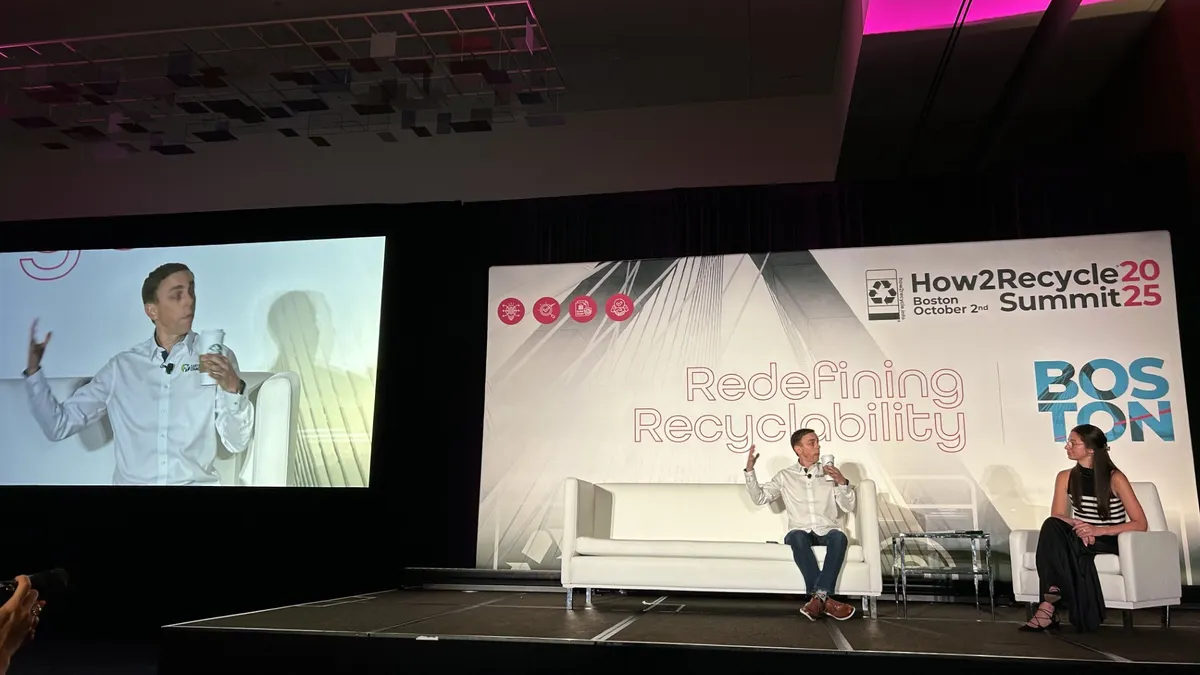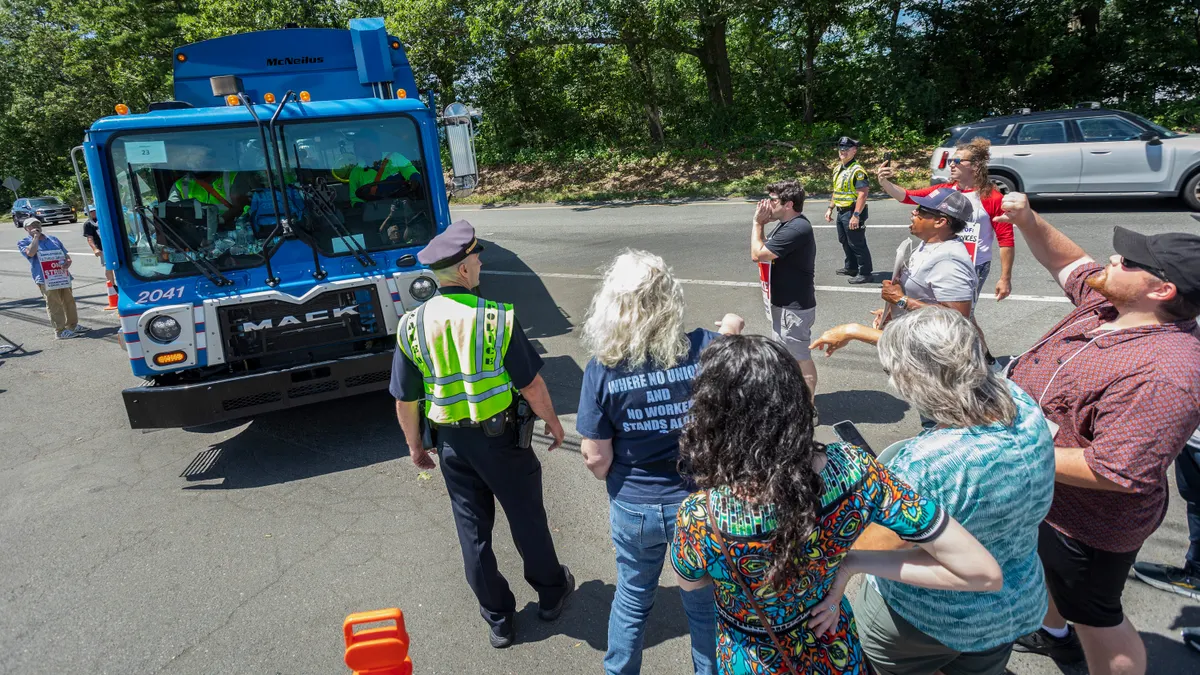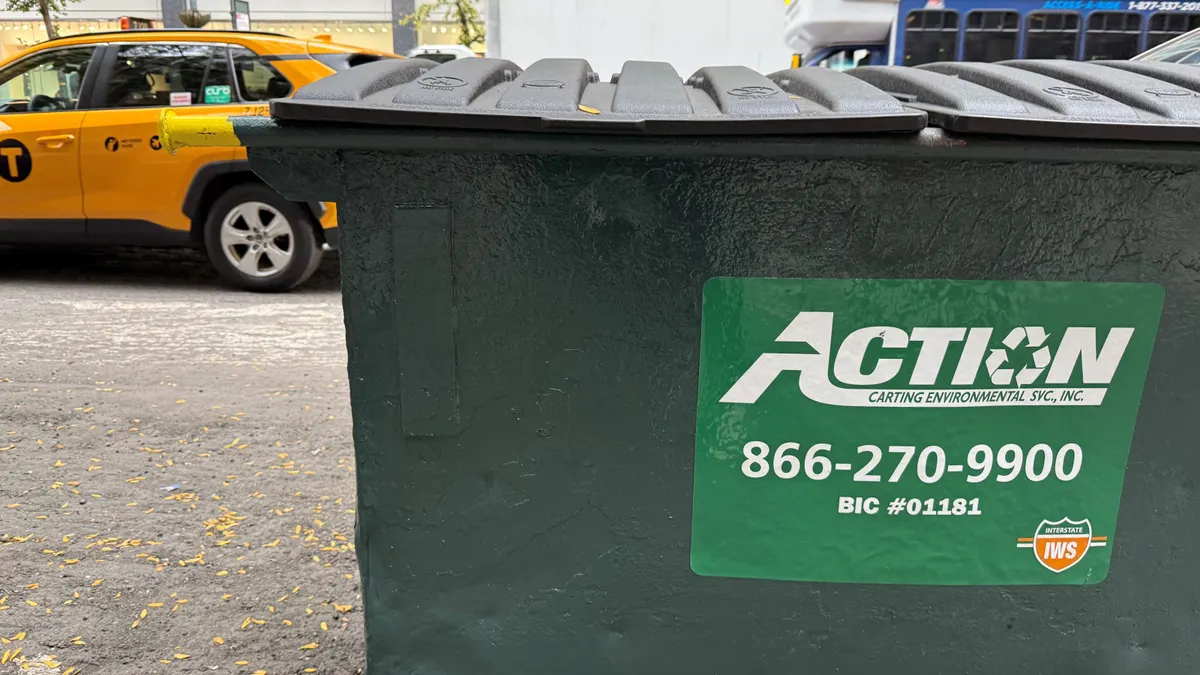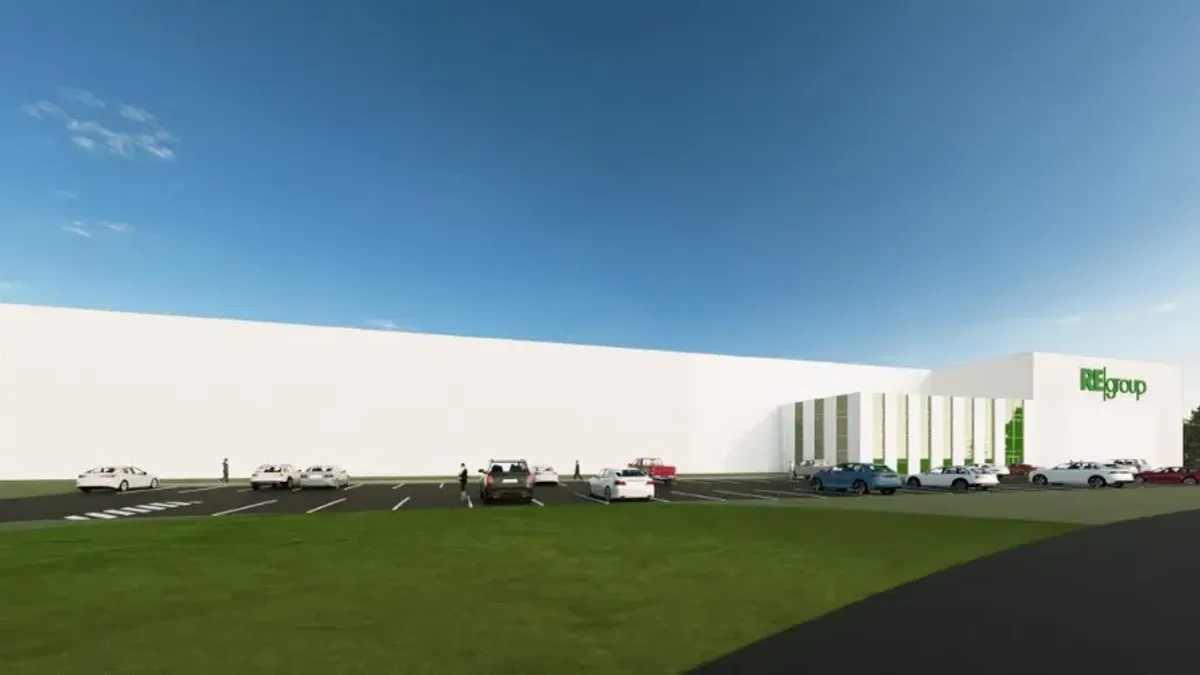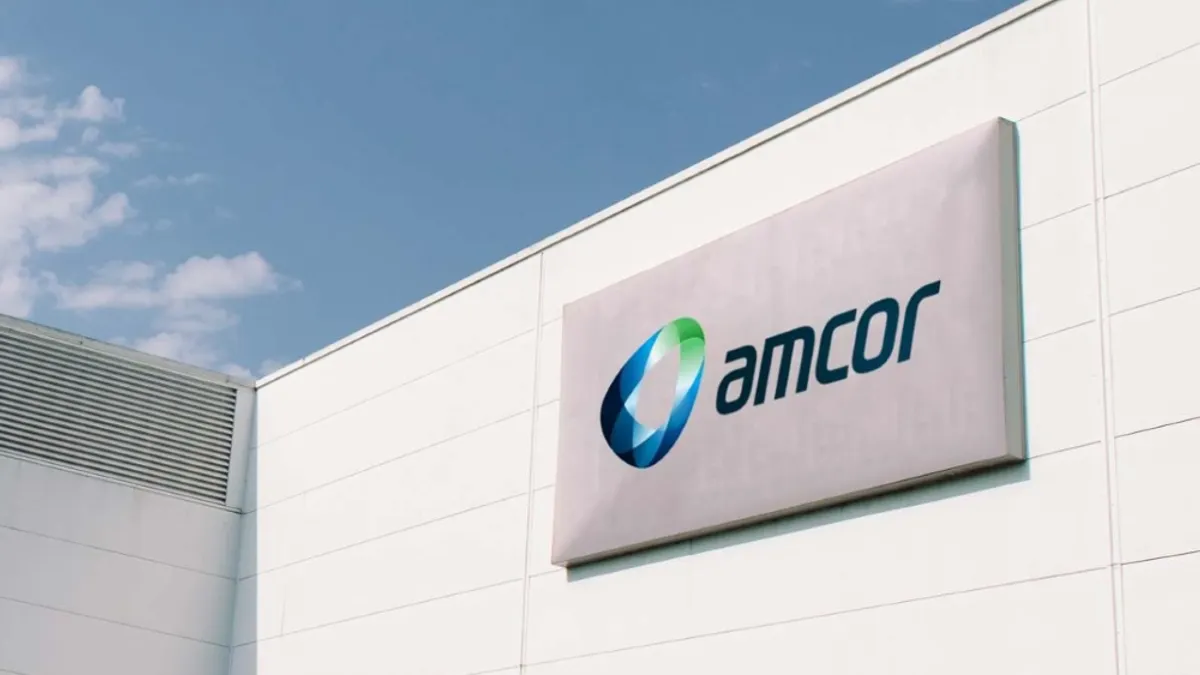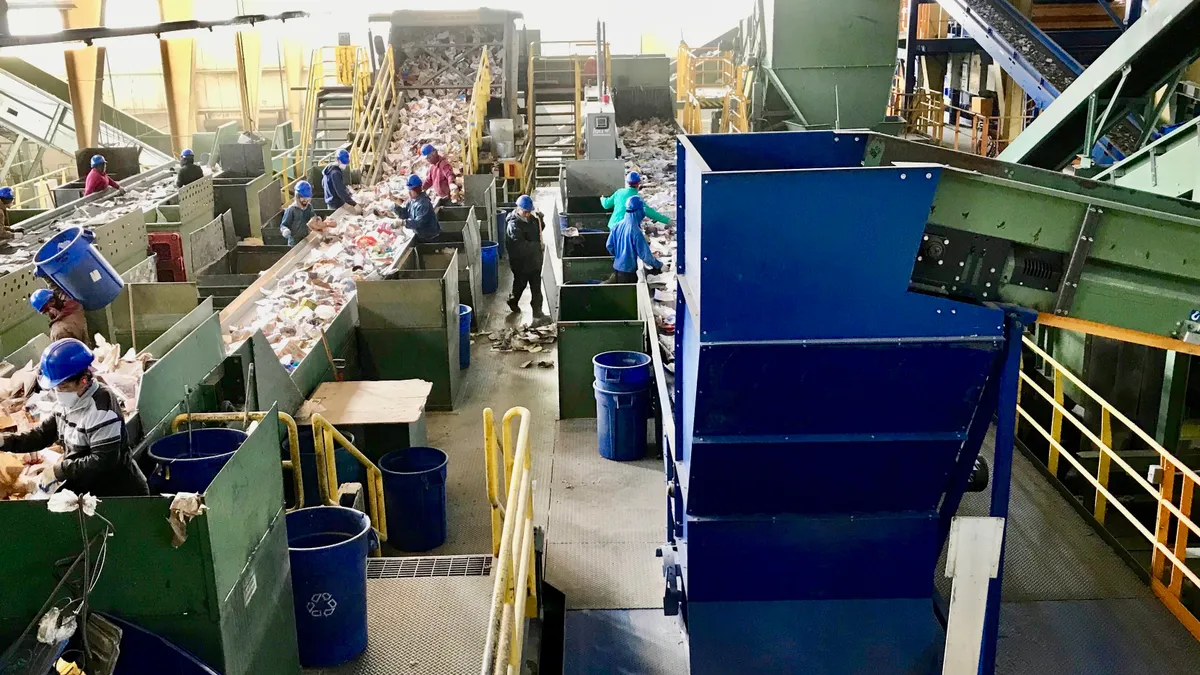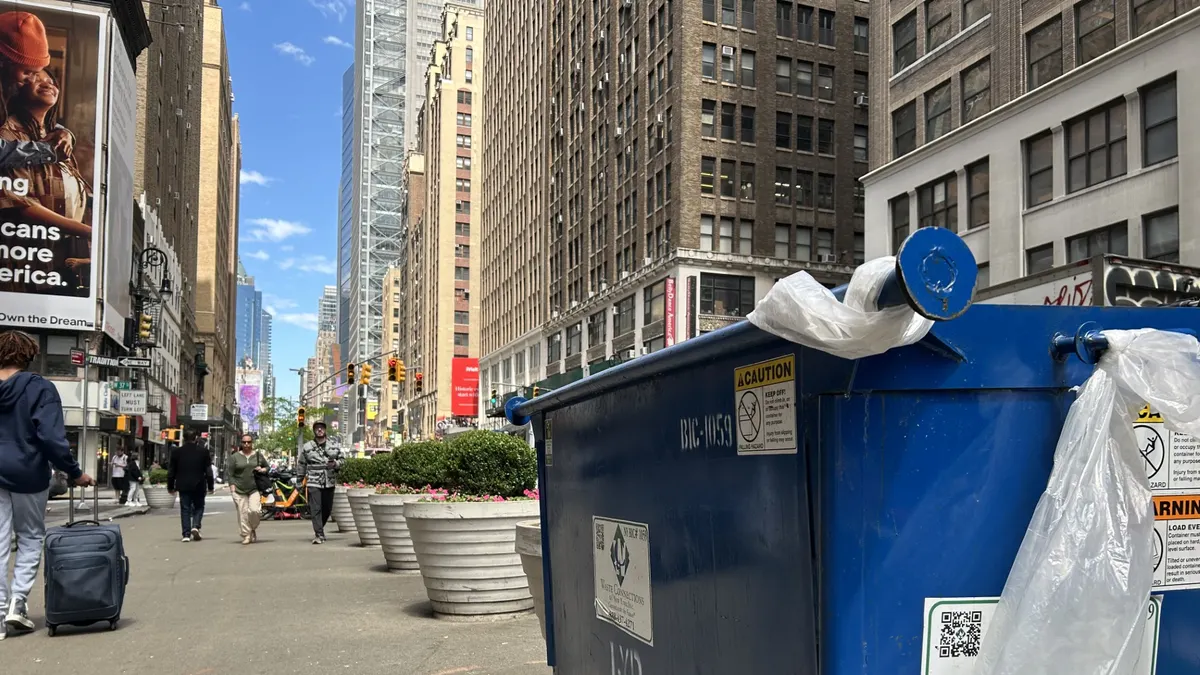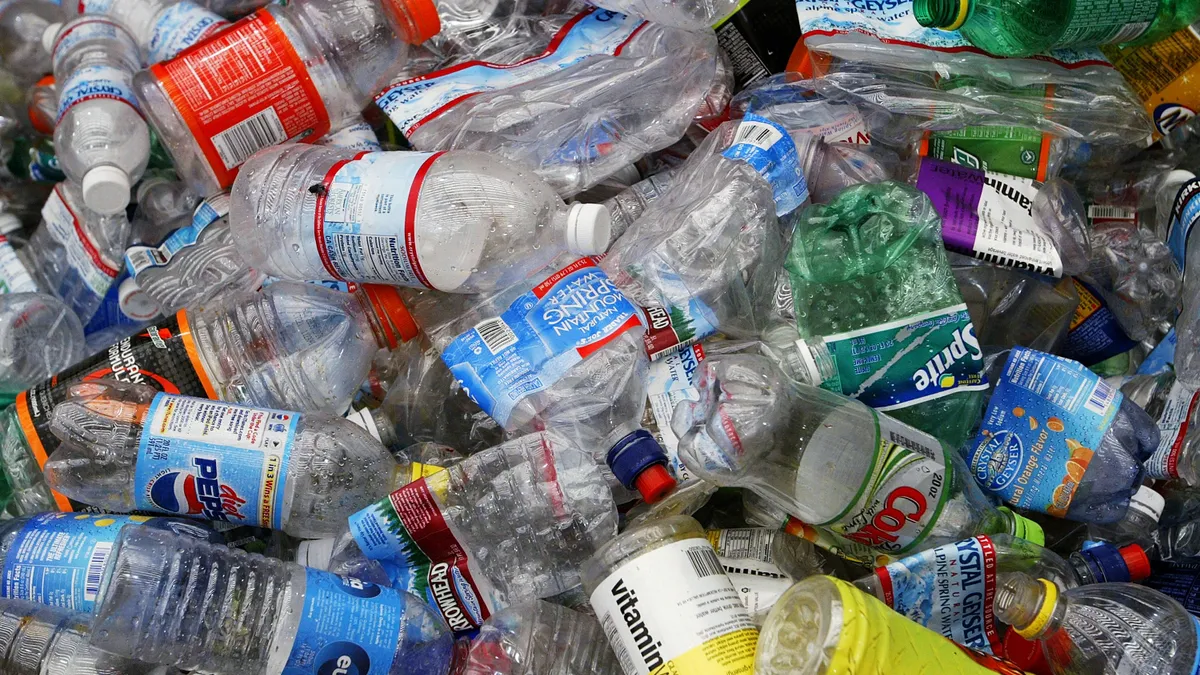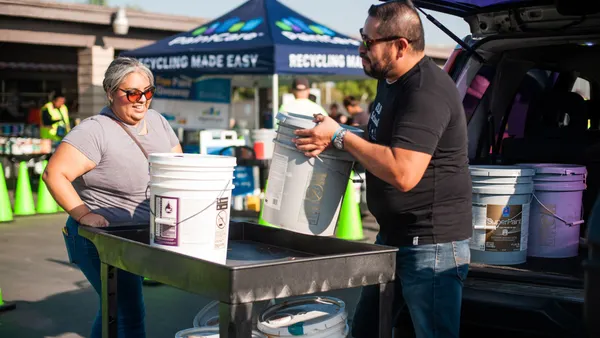The definition of “recyclable” is more fraught than ever as California’s SB 343 influences national labeling programs and puts companies on the defensive about certain packaging, with some considering pulling it from the state entirely.
Implementation of the 2021 law, which set the strictest guidelines for recyclability claim symbols in the U.S., was top of mind during GreenBlue’s recent colocated SPC Advance and How2Recycle Summit events in Boston.
The voluntary How2Recycle label program has shifted multiple materials from “widely recyclable” to “check locally” as a result of SB 343, which sets thresholds of material being collected and processed for 60% of the population in California. The group began phasing in new How2Recycle Pro labels this fall that reflect the shift.
How2Recycle Director Karen Hagerman said the group’s criteria “are going beyond technical recyclability” to focus on legal definitions.
The law also plays into recyclability guidelines in California’s SB 54 extended producer responsibility law, managed by CalRecycle, though the agency was clear that it’s not the arbiter of SB 343.
“The attorney general's office can prosecute if they believe Californians are being hurt by untruths,” said Karen Kayfetz, chief of CalRecycle’s product stewardship branch, adding that citizens or groups can also sue. “The courts essentially become the enforcement mechanism for 343.”
GreenBlue Executive Director Paul Nowak recommended that attendees look beyond the temporary “chaos” surrounding upended recyclability definitions and focus on clear communication.
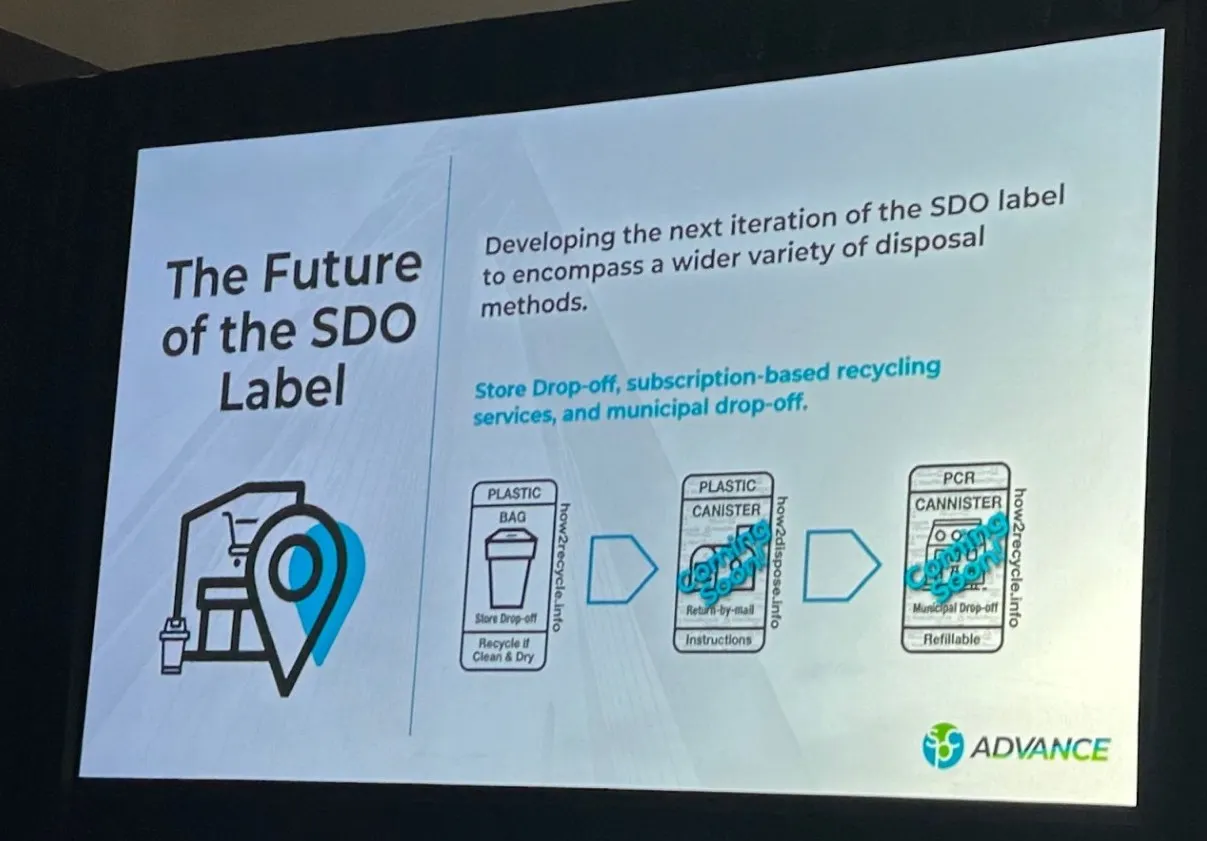
This includes revisiting store drop-off recycling claims for flexible and film packaging, which he noted as one of the most litigious areas.
Earlier this year, the Sustainable Packaging Coalition released research showing 71% of the U.S. population is within a three-mile radius of store drop-off options for polyethylene film and that many people were aware of or used such programs. Work is underway to test chain of custody system that can verify that material is recycled. The group is also exploring potential label categories for material that can be recycled via municipal drop-off locations or mail-in programs.
While all of this is complex for brands, they’re coming around on taking a unified approach to adjusted labeling to ensure national consistency. In an interview, Nowak said How2Recycle will use whatever is the most conservative definition or data point to make its assessments.
“Whatever is that highest bar is what will be used, so that when an instruction is unpacked, if it's questioned, it's easily defended,” he said.
The acceptance debate
The tipping point for qualifying as “widely recyclable” is based on multiple metrics that reflect whether the material is collected and processed for a majority of the population in California, which has increased the focus on how and why MRF operators will take certain material.
“The credibility of recyclability really does hinge on having end markets that are processing the material and turning it into new material,” said Hagerman. “I think it's clear that the public is getting more and more aware of this, and want more transparency and more clarity.”
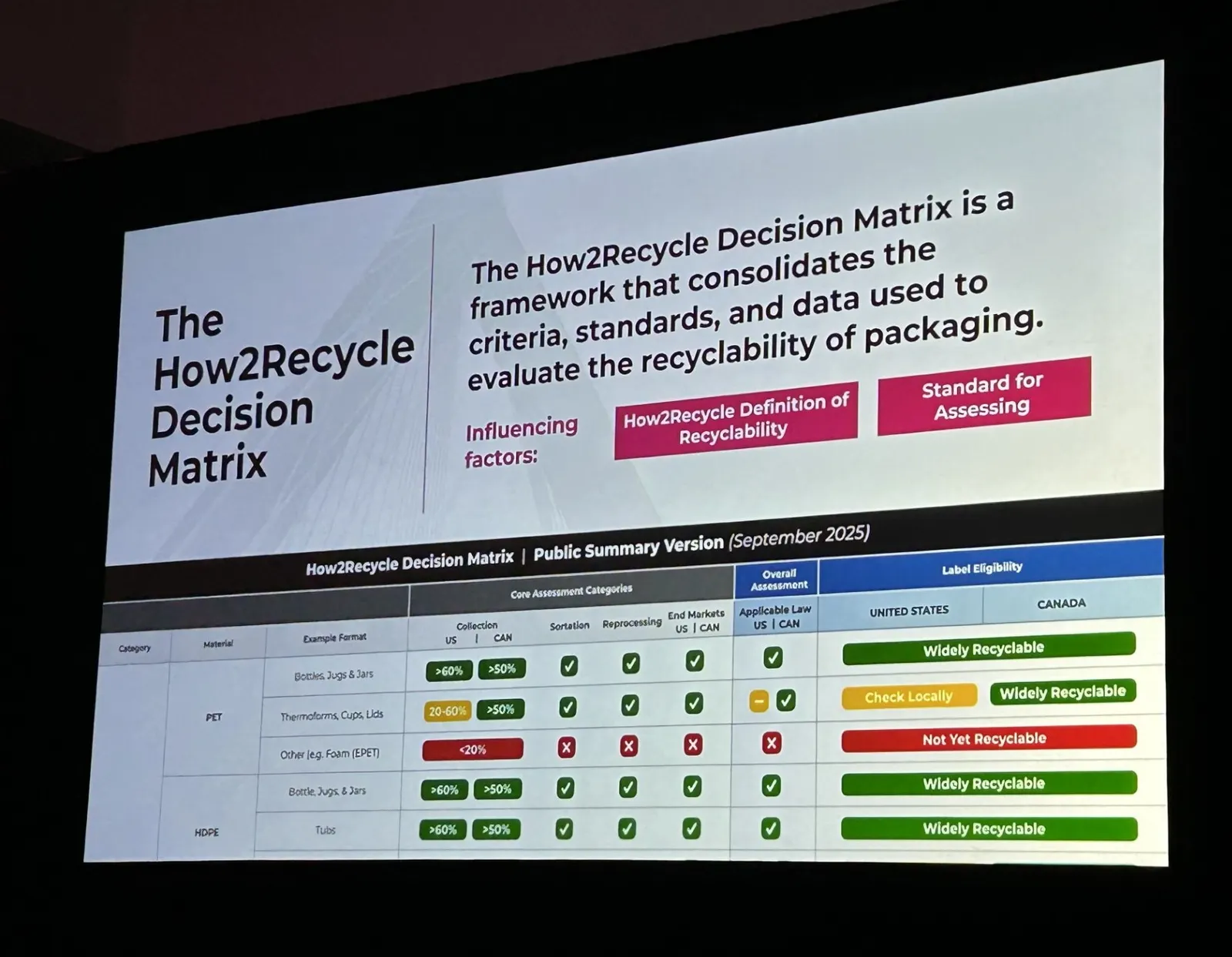
How2Recycle recently released a detailed end market decision matrix to share how it reviews these metrics.
MRF operators speaking at the week’s events were wary of expanding their lists without careful consideration.
“If we're going to add a new material or take a material off, we want it to be as cohesive across our entire footprint as possible,” said Shannon Crawford, director of recycling and environmental policy at WM, noting that adding new items to the acceptance list can also risk bringing in “tag-along” materials that look similar but aren’t recyclable.
As for film, multiple companies said the markets aren’t solid enough yet to justify accepting the material curbside. Casella Waste Systems’ newest MRFs have vacuum systems to pull film out, but right now that’s just to reduce contamination levels for other commodities rather than to sort film for sale itself.
“Once you open up that flood gate you're not going to unravel it once you introduce something like film,” said Bob Cappadona, Casella’s vice president of resource solutions.
At the same time, companies that make and use such packaging are working to overcome what could be an existential hurdle if their products can’t be sold in the state due to not meeting recyclability standards under SB 54 in the years ahead.
“It’s taking on a whole new shape of urgency now in California,” said John Hite, senior director of public policy and government affairs at The Recycling Partnership, which is leading various film and flexible recycling initiatives. “That's a material that needs a lot of work in California, and a lot of investment on a pretty steep timeline.”
Small format packaging is also on the bubble. Closed Loop Partners’ Center for the Circular Economy released a report this year about the potential to scale up recycling for the category, based on an initiative including Maybelline, L'Oréal, Kraft Heinz and Target.
The group is funding MRF equipment in California to prove out concepts for capturing the packaging in the hopes of eventually unlocking more funds from the state’s producer responsibility organization.
“It’s a huge impact on our business if we can't find a solution,” said Nicol Sobczyk Costello, vice president of circular economy at L'Oréal, who said small format accounts for 30% of its sales. Costello said the “cost of inaction” for potential lost sales of makeup alone in California was enough to help justify the upfront investment.
For cartons, which initially didn’t meet the widely recyclable threshold, this issue hit home even sooner.
Jordan Fengel, executive director of the Carton Council and a former market sustainability manager at Tetra Pak, said SB 343 led to numerous state lawsuits over alleged greenwashing.
“I had companies coming to us and going, ‘We're about to pull every single pallet and package off the retail shelf,’” in order to avoid lawsuits, he said. "People are rightly scared because eight lawsuits was not a small lift for our company.”
Fengel said this was resolved following intensive, last-minute engagement to prove acceptance in various end markets. The Carton Council and its members are also backing the launch of a new recycling facility in the state from the same company that recently reopened one in Iowa.
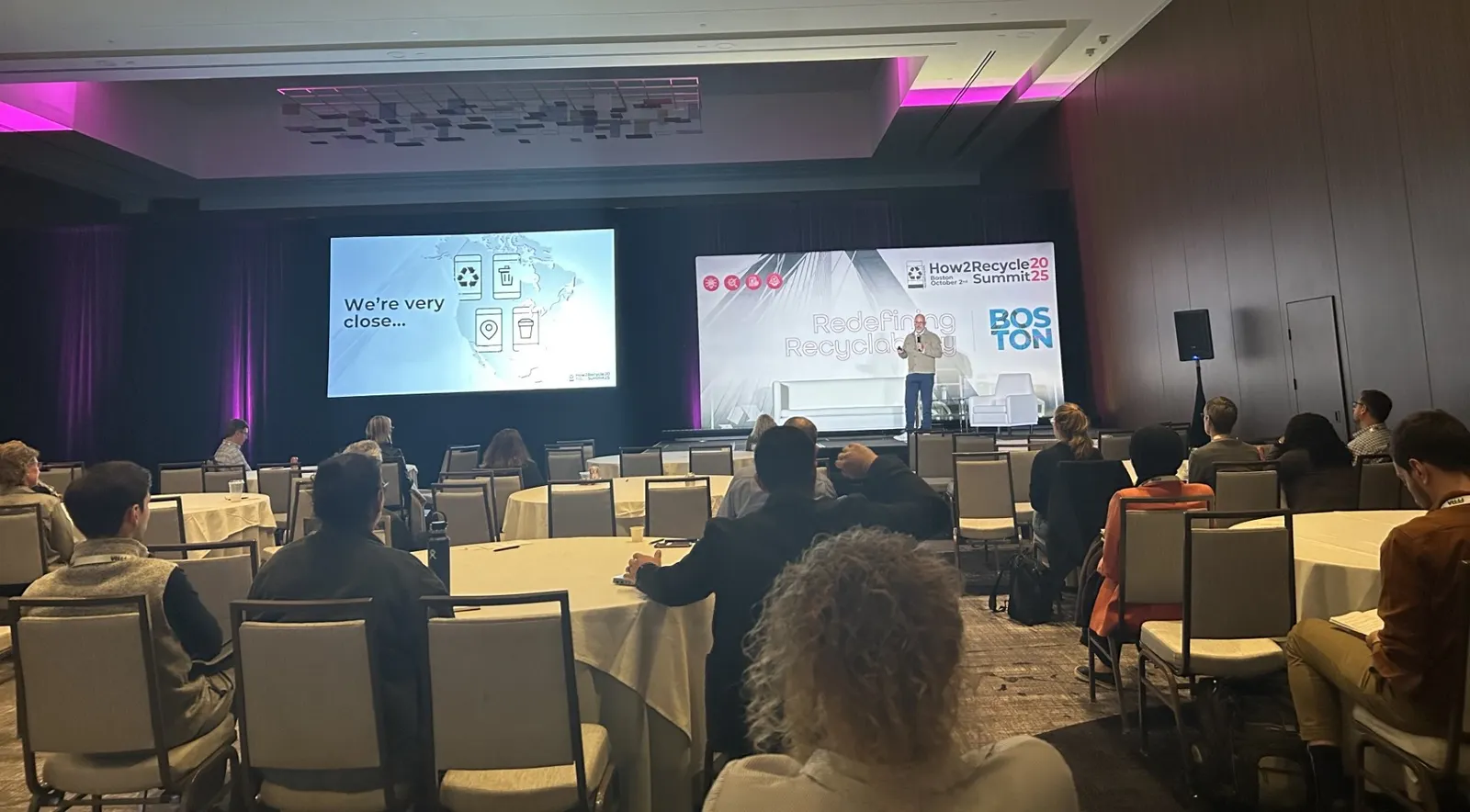
Looking ahead
Bridging this longstanding gap between recyclers and packaging companies, at a time when more consumers will gain access to recycling via EPR and regulations are still evolving, is an ongoing challenge.
While a range of efforts are afoot to improve recyclability data collection, definitions and investments, Nowak noted that recyclers say their bottom line has not changed.
“‘If we can't run our business at this and make a certain amount of profit, why would we take these materials, accept them and process them?’” he relayed. “So while they're excited about being brought to the table much more and sharing what they're able to do, they’re really heavily pointing at ‘someone has to make sure that they're looking at the end markets seriously and that they're verifiable.’”
Charlie Schwarze, senior director of packaging stewardship at Keurig Dr Pepper, said this “dynamic time” makes it challenging for brands like his and others to figure out if a static recyclability label can work at a national scale.
“We're hopeful on items like QR codes,” he said, noting that at the same time “I think the last thing we want to see is a complete removal of all messaging on packaging and start to see recovery rates fall.”
Nowak told attendees he still sees forward momentum and thinks there could eventually be a voluntary labeling standard throughout North America that meets regulatory requirements. In closing remarks at the How2Recycle Summit, he said that all of this change would ultimately be good to help address years of navigating outdated Green Guides standards and public pressure for companies to take responsibility for their packaging.
“Recyclability is being redefined, I don't think that's a bad thing,” he said. “It’s time for it.”


